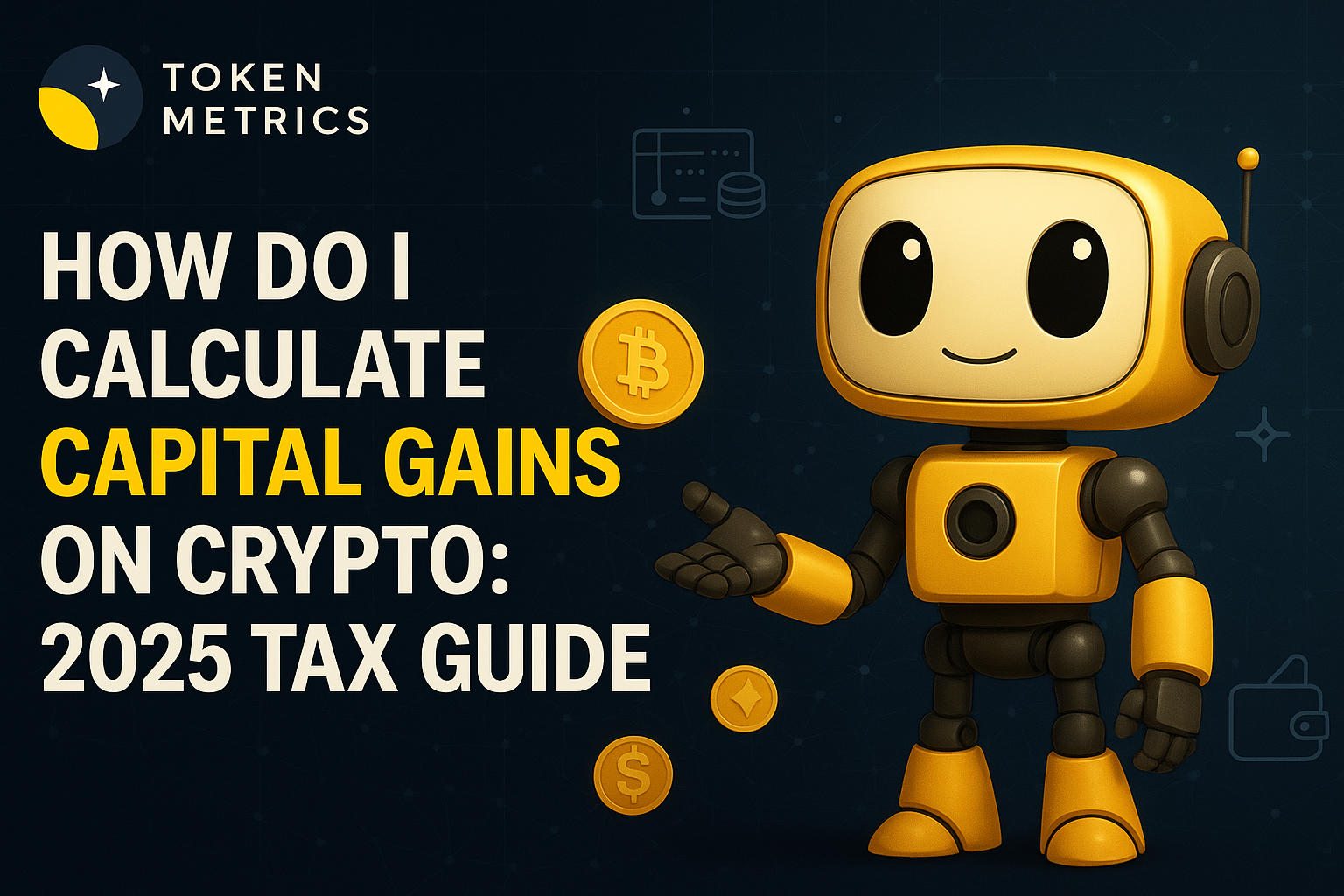Building the On-Chain S&P 500: A Technical Deep Dive into TM100 | Crypto Indices

Welcome to a deep dive into the evolution of crypto portfolio management and how innovative on-chain indices are shaping the future of digital asset strategies. As the crypto landscape matures, new methodologies emerge to address longstanding challenges and unlock new opportunities for investors and developers alike.
The Evolution of Crypto Portfolio Management
We've been working toward this launch for several years, through multiple pivots and market cycles. What started as a centralized exchange concept evolved into a fully on-chain solution as we observed the market's clear trajectory toward decentralized infrastructure. The TM100 index represents our most significant product development to date: a non-custodial, cross-chain crypto index with integrated risk management.
The crypto market has matured considerably since 2017. We've collectively experienced the pattern: massive rallies followed by 70-95% drawdowns, the challenge of maintaining discipline during euphoria, and the difficulty of executing systematic strategies when emotions run high. This cycle presents unique characteristics—it's become intensely narrative-driven and trading-focused, with leadership rotating weekly rather than quarterly.
The Core Problem
Traditional crypto portfolio management faces several structural challenges:
- Execution Complexity: Acquiring exposure across multiple blockchains requires navigating different exchanges, handling KYC requirements, managing multiple wallets, and executing cross-chain bridges. Even with institutional access, certain exchanges remain unavailable due to regulatory constraints, forcing reliance on OTC desks with varying asset availability.
- Narrative Velocity: This cycle moves faster than previous ones. What works in Q1 may be obsolete by Q2. Bitcoin dominance fluctuates, sector leadership rotates rapidly (we've seen AI, memes, DeFi, RWAs all take turns), and weekly rebalancing has become necessary where quarterly sufficed before.
- Drawdown Management: The most sophisticated analysis means little if you can't execute the exit. Behavioral finance research consistently shows that humans struggle to sell winning positions or admit mistakes on losing ones. Automation removes the emotional component entirely.
- Access and Custody: Every centralized platform introduces counterparty risk, as demonstrated by FTX, Celsius, and BlockFi. The industry learned "not your keys, not your crypto" the hard way.
Technical Architecture
Multi-Chain Infrastructure
The TM100 operates across seven blockchains: Ethereum, Base, Binance Smart Chain, Polygon, Avalanche, Arbitrum, and Solana. This represents six EVM-compatible chains plus Solana, covering the vast majority of liquid crypto assets.
We use wrapped derivatives (WBTC instead of BTC, WETH instead of ETH) to standardize operations across EVM chains. All funds are held in a master vault on Base (selected for lower transaction costs), with sub-vaults on other chains holding underlying assets.
Selection Methodology
The index tracks the top 100 tokens by market capitalization, filtered through two critical criteria:
- Liquidity Floor: Minimum 300k TVL in AMM pools. This ensures executable trades without excessive slippage.
- Circulating Supply: Minimum 25% circulation. This filters out low-float VC projects prone to unlock dumps.
Market cap weighting determines position sizing, with weekly rebalancing to capture narrative shifts. Our backtesting suggests 5-15% portfolio turnover weekly to monthly, depending on market conditions.
The Risk Management Layer
This is where the product differentiates from passive indices. We've integrated our market indicator to create a risk-off mechanism:
- Bullish Signal: Full allocation to filtered top 100 tokens, rebalanced weekly.
- Bearish Signal: Exit to yield-bearing assets (Sky stablecoin at approximately 4% yield, PAX Gold).
The system doesn't try to catch falling knives. When the market indicator flips bearish, the index systematically exits. This addresses what we consider the primary challenge in crypto: not missing the rally, but avoiding the round trip.
Smart Contract Standards
We're using ERC-4626, Ethereum's tokenized vault standard. This provides:
- Standardized deposit/withdrawal interfaces
- Composability with other DeFi protocols
- Auditable, battle-tested contract patterns
- Clear ownership representation via index tokens
The delegated actions feature (ERC-7682) allows automated rebalancing while maintaining non-custodial status. Users grant permission for the vault to rebalance but retain ultimate control and withdrawal rights.
Security Infrastructure
Given the target scale (we're planning for significant AUM), security requires multiple layers:
- Wallet Layer (Privy): Handles authentication and wallet abstraction. Supports social logins, email, and traditional wallet connections. Used by major platforms including Hyperliquid and Polymarket.
- Key Management (Turnkey): Secure private key infrastructure. Keys never exist in plaintext on application servers.
- Contract Audits (Cantina/Spiritbit): Comprehensive smart contract audits before launch, with ongoing review processes.
- Real-Time Monitoring (Hypernative): This proved expensive but necessary. Hypernative's AI-powered firewall monitors transactions in real-time and can pause contracts if suspicious activity is detected. Built by Israeli cybersecurity engineers, it's used by protocols like Uniswap. Given potential AUM, we couldn't rely solely on pre-deployment audits.
DeFi Composability: The Real Innovation
The index token itself becomes a tradable, yield-bearing, composable asset. This creates possibilities beyond traditional index funds:
Primary Markets
- Index tokens can trade on DEXs (Uniswap, Aerodrome) and potentially centralized exchanges. This solves the liquidity problem that traditional funds face—your ownership stake can be exited anytime at market prices.
- Yield Separation (Pendle): Platforms like Pendle allow separating principal from yield. Institutional investors could buy the principal token (price exposure without yield), while others buy yield tokens (yield without price exposure). This requires approximately $2 million+ TVL for listing.
- Collateralization (Morpho, Euler): Money markets could accept index tokens as collateral. Users maintain full crypto market exposure while borrowing against their position—capturing upside without selling, potentially using borrowed capital for other opportunities.
- Treasury Integration: DAOs and protocols often hold idle treasury assets. Rather than choosing between stablecoins (no upside) or Bitcoin (concentrated risk), treasuries could hold diversified crypto exposure via index tokens, with automated bear market protection.
API Access
We're integrating TM100 into our developer API. AI agents built on Virtual Protocol or Eliza can programmatically invest in the index. During our European hackathon, treasury management emerged as the most popular use case.
This composability creates network effects. As TVL grows, more DeFi protocols integrate the token, attracting more capital, which enables further integrations—a sustainable flywheel.
Performance Analysis
Disclaimer: All results are backtested simulations, not live trading results.
Testing from 2017 to present:
- Annualized Return: 104% (no fees), 85% (with fees)
- Volatility: 45%
- Sharpe Ratio: 1.58
- Sortino Ratio: 2.0
- Maximum Drawdown: 41%
The maximum drawdown metric deserves emphasis. Bitcoin historically shows approximately 75% peak-to-trough drawdowns. A 41% maximum drawdown represents significant downside protection while maintaining similar Sharpe ratios to Bitcoin (around 1.5 for BTC this cycle).
Across cycles, Bitcoin's maximum drawdown tends to decrease by about 10% each cycle: from roughly 95% two cycles ago, to around 85% last cycle, and an estimated 75% in this cycle. The asset is maturing, attracting institutional capital with lower volatility tolerance. Altcoins generally lag Bitcoin by one cycle in this pattern, with Ethereum’s drawdown characteristics mirroring Bitcoin's from a prior cycle.
Fee Structure and Economics
Management Fee: 1% annually, accruing on-chain (likely daily). Performance Fee: 15% quarterly, with a high watermark. This means fees are only charged on new profits. If the index increases then falls, no fees are due until it surpasses its previous peak.
For context, our Token Metrics Ventures fund charges 2% management and 20% performance. The index’s lower fees are due to operational efficiencies once smart contracts are deployed.
TMAI Integration
Our native token reduces fees through staking scores:
- Score of 10: Performance fee drops to 5%
- Score of 10: Management fee drops to 0.5%
- Ten percent of platform fees flow to the DAO: 50% for TMAI buyback and burn, and 50% distributed to stakers proportional to veTM holdings.
- Bitcoin at approximately $140-145K (from recent levels)
- Total crypto market cap between $8-14 trillion
- Maximum drawdown around 65% from peak
- Form Submission: Interest form to gauge demand and plan infrastructure scaling.
- Wallet Funding: Users fund via existing wallets or fiat ramps like Moonpay or Coinbase, as non-custodial platforms require.
- Delegated Actions: Permissions granted for rebalancing actions.
- Token Receipt: Receive index tokens representing ownership.
- Real-time holdings across chains
- Weekly rebalancing history
- Quarterly performance fee calculations
- Market indicator status (risk-on/risk-off)
- Transaction history exports for tax reporting
- Deeper liquidity pools
- Enhanced DEX integration
- Attractiveness to protocols requiring minimum liquidity
- Simpler user experience
- Listing index tokens on traditional exchanges or asset management platforms
- Derivatives, options, and structured products based on index tokens
- Integration with institutional custody and compliance solutions
- Core index deployment on Base
- LI.FI integration for optimized order routing
- Dashboard with analytics
- Manual onboarding and support
- Market maker integrations
- Automation of execution algorithms
- Enhanced onboarding flow
- Referral program launch
- Full API release
- Additional protocol integrations
- Enhanced analytics dashboard
- Mobile app considerations
- Yield options and derivatives
- Cross-protocol composability
- Institutional custody solutions
This setup aligns incentives: users who stake and participate benefit from fee discounts and revenue sharing.
Liquidity and Execution
Phase 1 (Current): LI.FI integration for smart order routing. Handles trades up to around $25,000 efficiently with minimal slippage.
Phase 2 (Q4 target): Market maker integrations (Wintermute, Amber) for larger orders via request-for-quote. Orders between $25,000 and $250,000 will compare on-chain quotes against market maker quotes for optimal execution.
Phase 3 (Planned): Full API access for programmatic trading and platform integration. Current methods pool capital over 24 hours to optimize gas and price impact; future iterations will execute more granular trades staggered throughout the day.
Market Context and Timing
We project a cycle peak around spring to fall 2026, roughly one year from now. Our key targets include:
This cycle is characterized by intense trading activity, with perpetual platforms like Hyperliquid, Bybit, and Binance dominating volume. Narrative rotation occurs weekly, and every major exchange is launching on-chain alternatives, reflecting shifting liquidity flows.
Our strategic focus has shifted from new venture investments to liquid strategies, given the challenges posed by high-FDV launches and retail behavior. Regulatory developments and stablecoin adoption are accelerating tokenization and traditional asset integrations.
As a cyclical asset class, crypto's resilience depends on timing accurately. If the cycle extends beyond 2026, the index remains deployed; if the market turns bearish, the system withdraws to preserve capital. This adaptive approach aims to leverage both uptrends and downturns.
Implementation Details
The early access process involves:
The platform provides:
Once received, index tokens are immediately tradable and composable, supporting a variety of DeFi strategies.
Beyond TM100: Future Considerations
While initial plans included multiple sector-specific indices (AI, memes, DeFi), liquidity fragmentation and lower-than-expected volume have shifted focus to a single, highly liquid index. Benefits of this approach include:
Future concepts include:
Why This Matters
The crypto market has long sought robust, on-chain infrastructure to address retail and institutional needs. Challenges include concentrated bets, custody risks, and high fees. Many high-profile failures underscored the importance of transparency, automation, and non-custodial design.
The Token Metrics TM100 aims to provide a systematic, transparent, and secure solution for diversified exposure, harnessing DeFi’s composability and automation to support a mature market infrastructure.
Technical Roadmap
Current (Early Access):
Q4 2024:
Q1 2025:
Beyond 2025:
Conclusion
Building on-chain infrastructure involves unique tradeoffs: immutability, gas costs, and layered security. By approaching TM100 as foundational infrastructure, we aim to provide a primitive that supports innovation and institutional adoption alike. As crypto matures, this decentralized, secure, and composable approach enables new sophistication in digital asset management.
The code is entering final audits. Early access onboarding begins soon. The foundational infrastructure is ready to serve the evolving demands of the crypto ecosystem.
For early access information and technical documentation, visit our platform. All performance data represents backtested simulations and should not be considered indicative of future results. Cryptocurrency investments carry substantial risk including potential total loss of capital.
Create Your Free Token Metrics Account

.png)




%201.svg)
%201.svg)


%201.svg)










.svg)




.png)